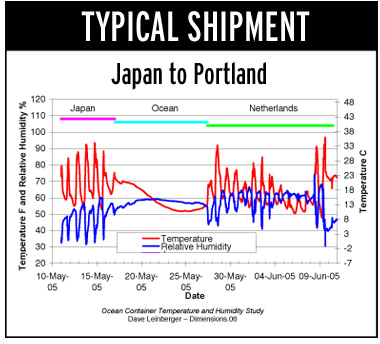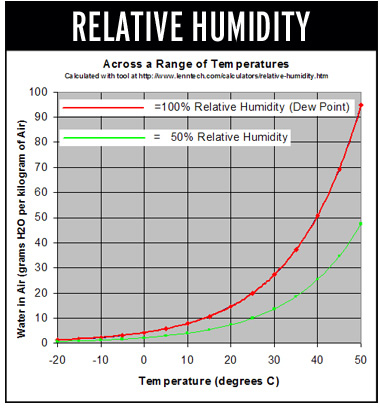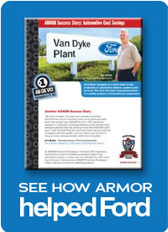 |
||
 |
||
|
ONETH BY LAND AND TWOETH BY SEA - CORROSION DAMAGE DOES NOT DISCRIMINATE As heat and humidity increase during the summer months, delivering rust-free parts, especially metal parts shipped internationally, is nearly impossible. For those in the metal and automotive industry, ocean shipments are a "black box of mystery" where corrosion damage often seems unpredictable -- one shipment is not too bad, the next one is a total disaster. In this article we unlock the mystery and shed some light on how to address and solve corrosion problems for all companies who ship -- whether by land or by sea. Corrosion, or iron oxide, is the chemical reaction between iron and oxygen in the presence of water. For the occurrence of any reaction, the molecules or atoms of the reactants (iron and oxygen) must collide with one another. However, in many cases, just having the reactants in contact is simply not enough. Many reactants need the presence of a catalyst. When shipping metal parts, it is likely that iron, oxygen and water (whether in liquid or vapor form) will be present in the shipping container, which offers ideal conditions for corrosion to form. Understanding how the internal and external temperature of your shipping crate/materials impact the formation of rust on the contents within is one step in the right direction to finding the ideal corrosion management solution to protect your metal parts from rust. Corrosion damage is accentuated by temperature fluctuations. For example, when a shipping or storage container cools down after a hot day in the sun condensation can occur. There is a maximum amount of moisture that air at a particular temperature can hold. Warm air can hold more moisture than cold air. If the temperature drops enough, condensation will occur. Any excess moisture beyond this amount will be condensed as a fog of small droplets floating in the air or as dew on a nearby cold surface. The bad news is that in most packaging, the metal surface usually cools the fastest and will therefore attract the moisture. The study titled “Temperature & Humidity in Ocean Containers” by David Leinberger, CPP, CPLP, Senior Packaging Engineer for Xerox Corporation, looked at typical ocean shipments and divided them into three distinct stages. The first stage includes the time from when the container is filled until the container is loaded onto a ship (this includes road transportation and brief periods of storage). During stage one, daily cycles of temperature and humidity are common. The second stage is the actual time at sea or aboard a ship. During this stage, daily cycles of temperature and humidity are usually very minor or completely non-existent as temperature changes are gradual, often occurring over days rather than hours. The final stage (stage three) begins when the container is removed from the ship and transported to the final destination. During stage three, daily temperature and humidity cycles are common and may be extreme. 
The recorded data shows that the highest risk of corrosion damages occur on land before or after the ocean freight. This is so because the inner temperature of the packaging and the air contained will follow the same pattern of fluctuations as the surrounding environment. The air inside, will be cold and saturated during night hours, and hot and humid during day hours. For years, it was falsely believed that ocean shipments were more susceptible to corrosion than ground transportation, but this study shows that the opposite is true. Condensation and corrosion problems are more likely before and after the sea voyage because the shipping container suffers daily temperature cycles as it is exposed during overland transport or waiting on the dock. The following humidity diagram shows that the amount of moisture the air can hold doubles for every 10⁰C over “normal” temperatures. If, for instance, air of 20⁰C (68⁰F) and relative humidity (RH) of 50% is cooled to 10⁰C (50⁰F), the RH will reach 100%. Any further cooling would cause immediate condensation. There is typically 10-15 m3 of air in a loaded 20 ft container. If the temperature should suddenly drop from 30⁰C (86⁰F) to 20⁰C (68⁰F) an amount equal to about half a kg of water could condense in the container. This can occur in a matter of hours. 
Understanding shipping conditions and other variables that can influence corrosion formation allows for the design and use of protective packaging solutions that will preserve and protect. While moisture cannot be completely removed from the packaging, it is possible to avoid condensation through the use of porous packaging (such as ARMOR WRAP® paper or desiccants). ARMOR proprietary VCI becomes more active in the presence of moisture because moisture increases the vaporization rate of the VCI formulation components. Uniquely, ARMOR’s VCI Nanotechnology responds and adjusts to these temperature and humidity fluctuations, increasing and decreasing as needed. For additional information on international shipment and packaging options, visit the ARMOR website at www.armorvci.com or contact your ARMOR sales representative. |



